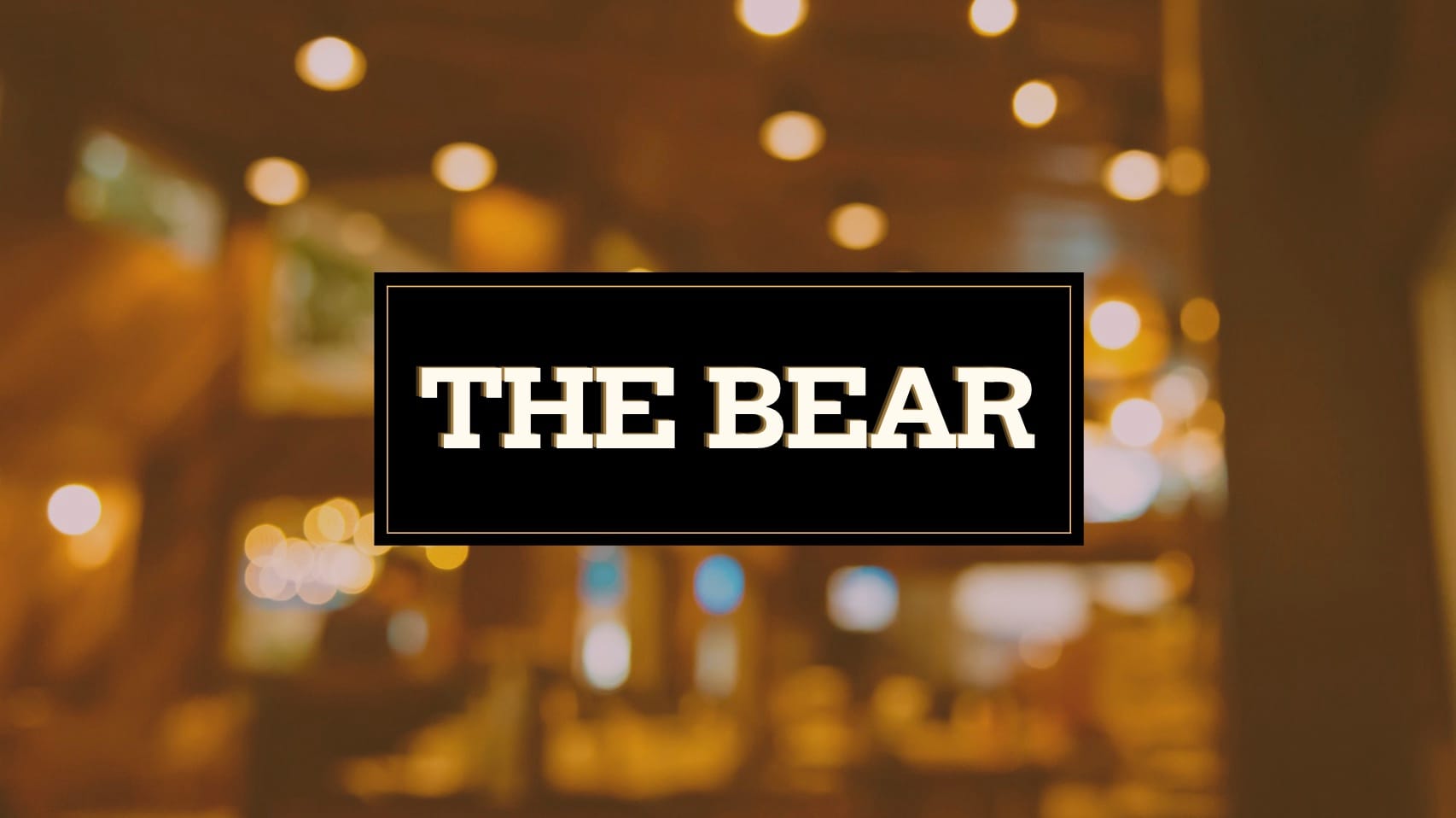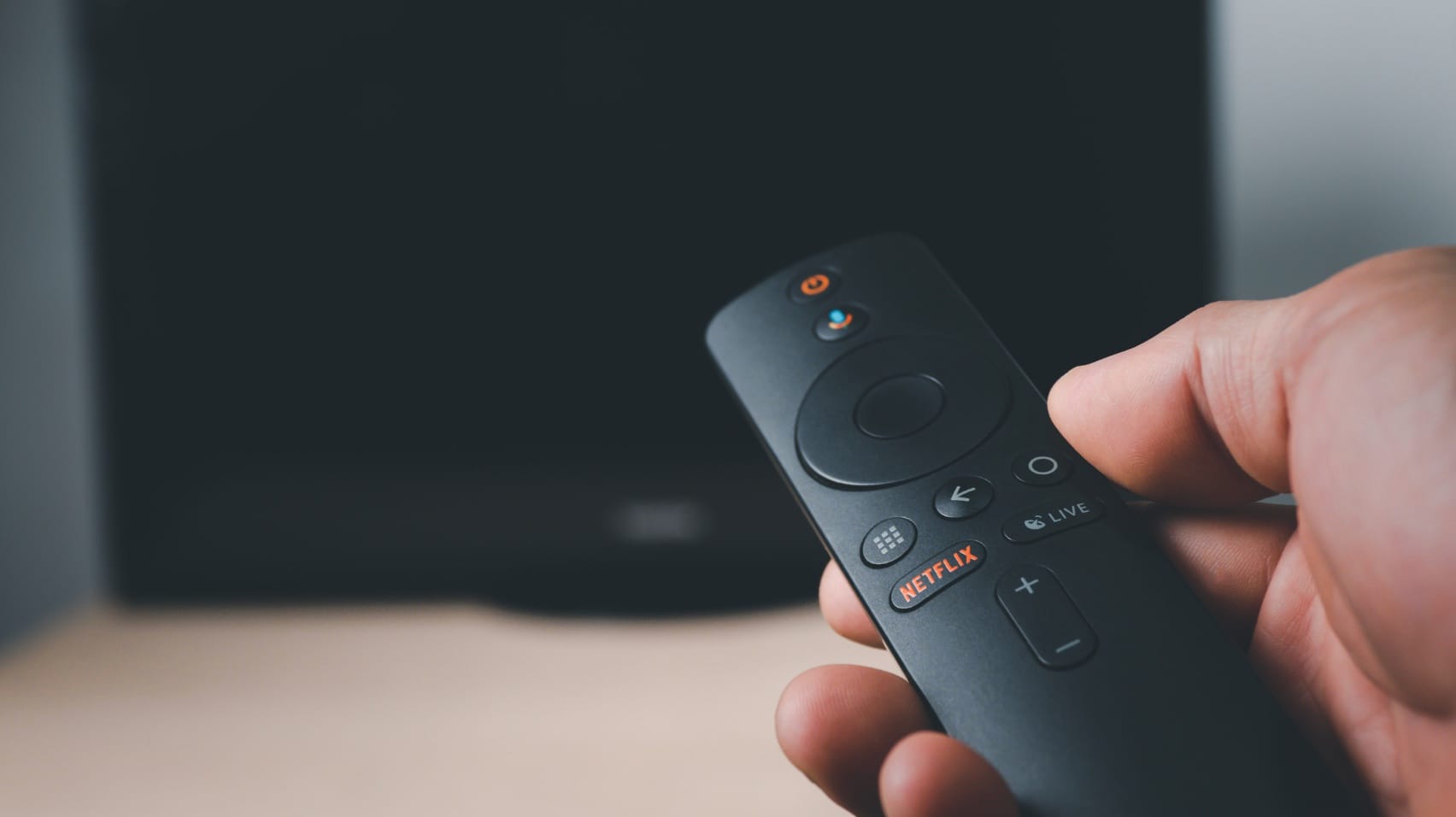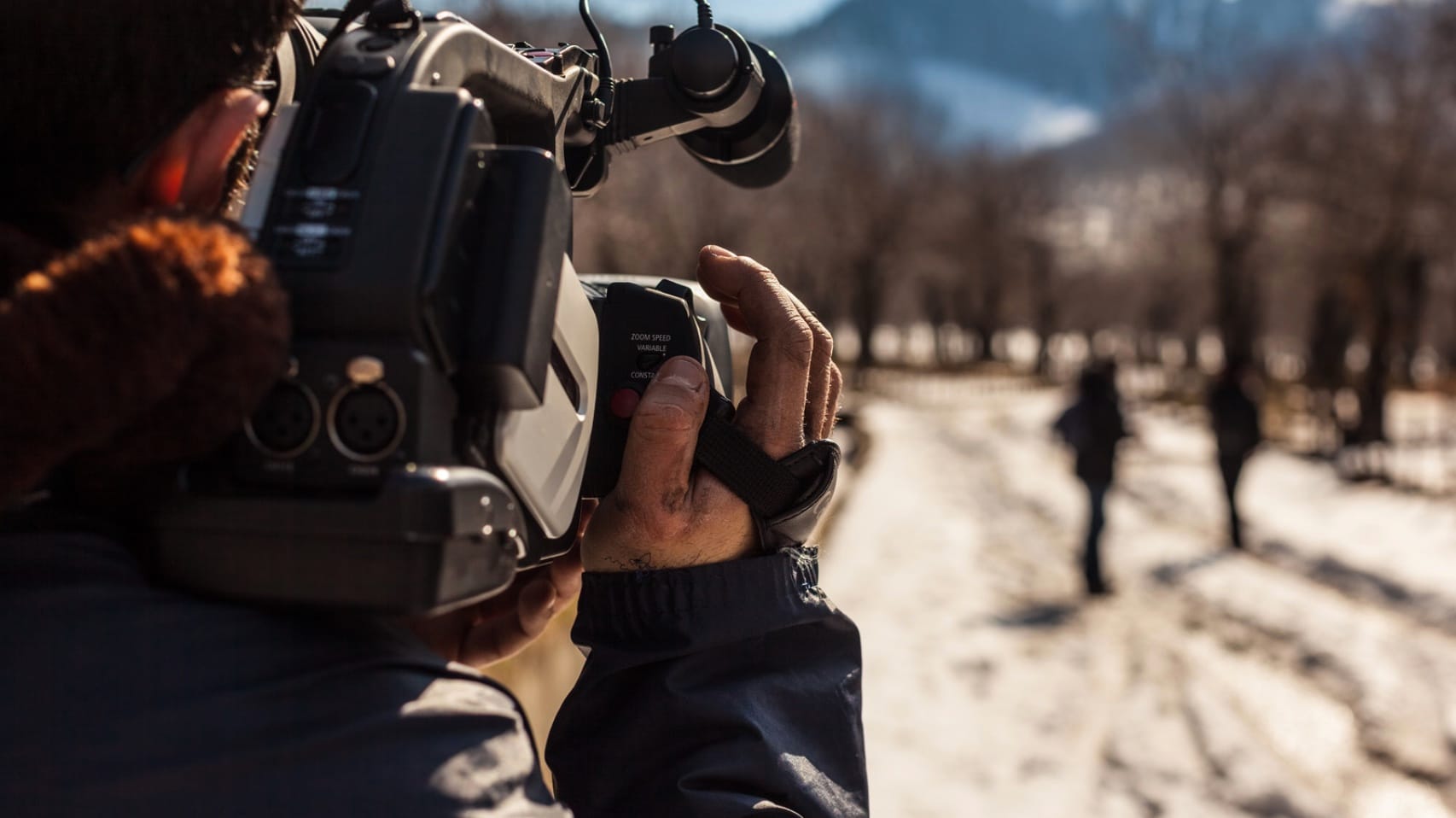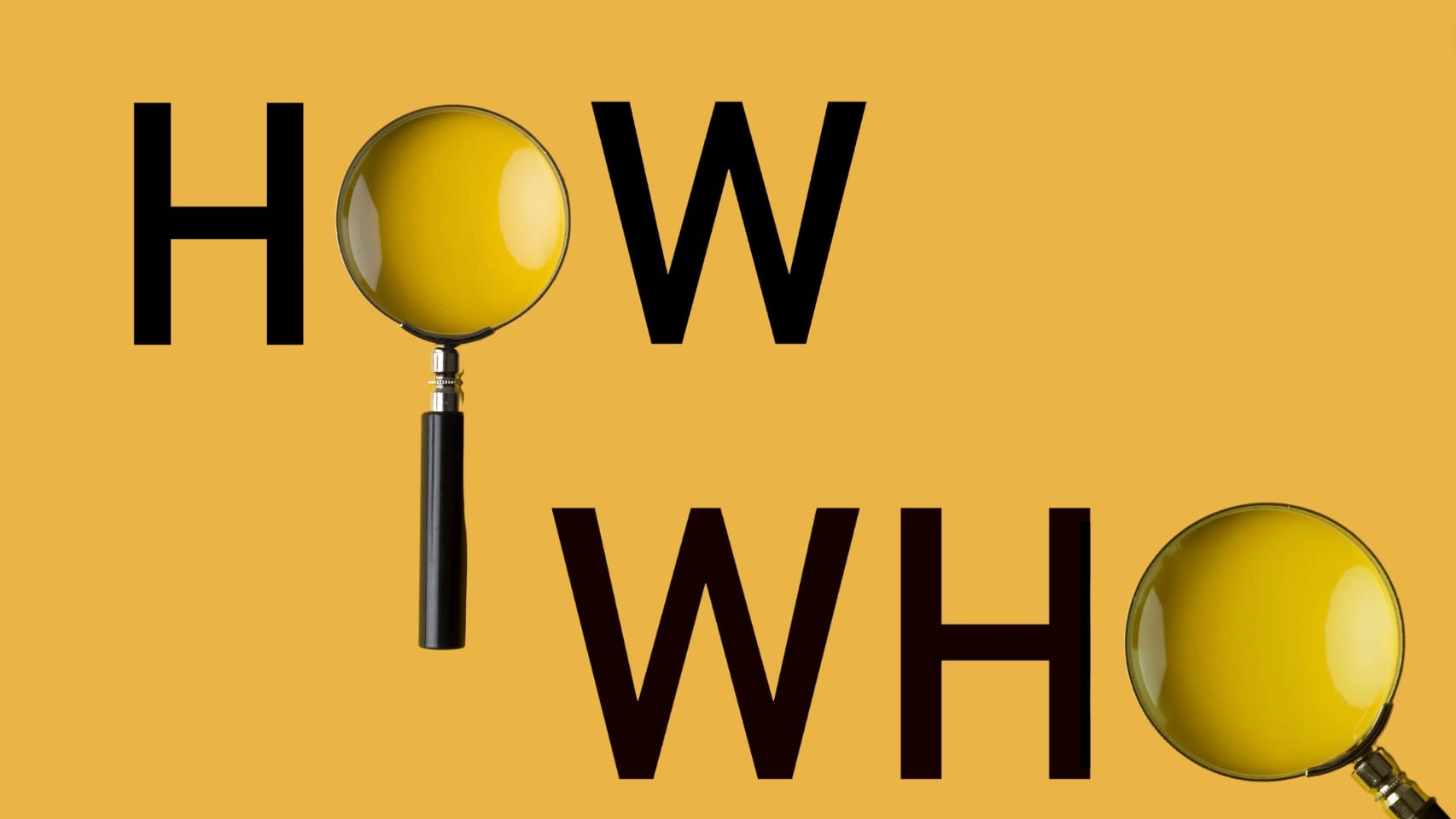The Bear: The First Image and the Opening Sequence
This week, we’re going to be talking about The Bear.
We’re going to be analyzing the first image of The Bear and the opening sequence of the pilot. We’ll be talking about the importance of the first image in your screenplay not only when it comes to selling your script but also on a creative and structural level. And most importantly, we’re going to talk about how to make the first image work for you in your screenwriting.

The first image of your screenplay, just like the first image of The Bear, is the most important image in the whole script. That’s because it’s the only element that you know that every reader is actually going to read!
When a coverage reader reads your script, they are actually making the decision from that very first image: am I going to read, or skim? Is this going to be cool? Or is this going to suck? Am I excited about this? Or is this just another script I’ve got to slog through?
When a producer, director, manager, agent, or star reads the first image of your script, from that very first image they are making a decision: Is this script for me? Is this something I’m going to want to make? Is this one strong enough to take home to read tonight compared to all the other ones on my desk or iPad? Is this the one that’s most likely to actually be good?
This may seem like jaded Hollywood B.S., but it’s not. Because the first image is also the image that the audience uses to decide if they’re going to watch your show. Is this show for me? Is this movie for me? Do I want to stream this? Or do I want to flip to something else?
Netflix has actually proven that audiences make a decision about whether they’re going to watch your show or movie in the first 10 seconds.

Think about that! The first 10 seconds!
Yet, despite this, many writers throw away their first image! Many writers simply don’t understand that the first image is the moment that pulls the reader into the script, or fails to pull them in.
Another reason the first image is so important is that the decision to buy a script or to option a script is an emotional decision.
You may think that people are buying your script, because it’s “four quadrant” or because it has this element or that element. Sure, that’s a part of it. But usually, someone’s actually buying your script because they had an emotional experience when reading it, an experience that made them say to themselves, I’ve got to do this, I need to do this, I absolutely need this script.
You can think of the first image in your screenplay or pilot like the first moment on a first date. No matter what happens next, that’s the moment that’s going to set your expectations.
You might have a lot of great stuff (or terrible stuff) that comes after that first image in your screenplay. But that first image is going to determine the way that the reader feels about the rest of the script. Everything else in the script is going to happen in relation to that first image.
Many years ago, I used to direct off-Broadway and off-off Broadway theater. And I realized very quickly that when people come to see off-off Broadway theater, just like when most coverage readers sit down to read a script, they are not expecting to have a good experience.
When people come to watch off-off Broadway theatre, they’re actually coming to support their friends. Most of your audience is there as charity. And what they’re really doing when they sit down is praying! Please, please, let it not suck! Please let me not have to have this negative experience, and then have to go pretend to have liked the play and act supportive of my friend! Please let it not suck!
They are not coming into an off-off Broadway play thinking, I hope this is awesome. I can’t wait for this incredible experience of entertainment. No, they’re coming in already a little depressed.
The same is true for almost every reader of a screenplay or pilot. Because there are so many thousands of terrible screenplays out there. And I’m not just talking about screenplays by new writers. I’m talking about bad screenplays by writers with agents and managers and credits and connections: people who are throwing crap against the wall to see if it sticks, rather than writing from their heart and from their passion.
If you are a coverage reader, it feels like for every thousand scripts you read, maybe one of them is good.
As a producer, the scripts get passed up to you, so once you’ve established yourself, you’re reading more good ones. But maybe one out of every hundred scripts you read is actually great! It’s so rare that we actually get to read a great script.
And what happens is, professionals in this industry end up coming to a script a little bit jaded, just like that off-off Broadway audience. Please let this not suck! I really need this to be good. I just worked for 12 hours and I’m taking the script home and I’m gonna sit down and I’m gonna read this script before I go to bed. Please let it not suck.
The trick I used to shock my audience out of negative past experiences when I directed off-off Broadway is the same trick I use as a screenwriter to adjust the expectations of my readers.
Usually, when you walk into an off-off Broadway theater, you walk into a room with a couple of chairs and some black boxes and that room basically screams at you: this is not a real production! This is going to suck!
What I would do is I would spend a little bit too much money on the set– a disproportionate amount of cash on the set. I would think hard about the stage picture that the audience is walking into when they enter the theatre. Remember off-off Broadway theaters rarely have curtains; you’re looking at the stage. If you arrive a half hour early, you’ve got a half hour to either look at a bunch of chairs, or to look at something cool.
What I realized was that if you just gave that audience something cool to look at while they waited for the play to start, they would have a better experience for the whole rest of the play. Because they were set up to think, Oh! I thought this was going to suck, but this actually looks cool. Maybe something interesting is going to happen. Maybe this is going to be fun! Maybe this is not just going to be a “support my friends” experience. Maybe this will actually be entertainment.
The first image is your opportunity to shake your reader out of their jaded funk, and make them realize: maybe this is actually going to be good…
The first image of your screenplay or pilot is a window through which your reader, and eventually your audience, will experience everything else in your script.
If you throw away your first image, if your first image is average, you’re setting expectations of average.
But if your first image is great, you are much more likely to have that positive reaction to all that other great stuff that you have built in your script.
This is why you should spend a disproportionate amount of time of your “time budget” on that first image. You should work those first couple lines of your script until they feel like a poem until they’re so freakin’ beautiful, so compelling, so interesting, so specifically your show, your movie, your voice that it almost feels like the script could never have happened without it.
Now you understand the commercial reasons why the first image is so important in screenwriting. But your first image is equally important structurally.
Let’s talk about the first image of The Bear.

What we’re about to watch in The Bear is basically eight episodes of a migraine headache-worthy experience.
You literally feel like you have been dropped into the worst kitchen in the world.
Everybody is yelling at each other. Everything is falling apart. Everybody is under so much stress, all the time. It’s the most stress I’ve felt watching a show or movie since Uncut Gems. You feel like you’ve been dropped into this very naturalistic, real-life maelstrom.
The first episode of The Bear is hell to watch. From the moment you arrive at that restaurant, you’re about to be dropped into a very naturalistic hell, and a very bleak landscape, that doesn’t necessarily promise the places of transcendence where this series is actually going.
And if the writers, Christopher Storer and Joanna Calo, had just started by dropping us into this brutal kitchen, there’s a good chance that we might have tuned out.
That’s not because the writing isn’t brilliant, it’s not because the performances aren’t brilliant; it’s because the show is hell. Without that spiritual feeling that the first image gives us, we might not know that there’s any hope. We might not know that there’s a deeper spiritual message. We might not know that there’s something transcendent in this show, that goes beyond just a hell of the kitchen.
But instead of starting with the hell of the kitchen, we start with a beautiful image of a bridge at night.
Our main character, Carmy, (who we’ll later find out is also referred to as ‘the bear”) is walking across this bridge. At the center of the bridge is a cage. And as Carmy approaches the cage, we can see that he’s terrified.
He says, I know, I know. He opens the cage, and a bear comes out, approaching him…
This surrealistic, expressionistic first image of the bear on the bridge adds a layer of feeling to The Bear, and it makes a promise to the audience.
First, you can already see how this first image of The Bear is so much more interesting than just starting with the image of Carmy in the kitchen. The image of a chef in a kitchen is something we’ve seen in 1000 shows. But the image of a bear in a cage on a bridge is an image that we’ve only seen in this show.
This is the first thing you want to know about your first image:
If you have seen the first image of your screenplay in another show, or in another movie, it is not the first image that is doing its job.
If you show a professional in Hollywood– a producer, a manager, a director, an agent, a star, a coverage reader– an image that they’ve already seen in a movie or show, the first message that you are giving them is: this is going to be like something you’ve seen before. This is going to be derivative. This is going to be normal.
That doesn’t mean that every show needs to start with a surrealistic image. There are all kinds of images you can start with. Even if you’re in a really naturalistic world, simply by drilling into the specificity of what does Carmy look like in front of that stove? Of course, you can make that image so specific that it feels fresh and new.
But your first image cannot be an image that has been captured exactly this way in a script before.
You’re going to keep working the first image of your screenplay or pilot until it looks really cool, and is something that the audience has not seen exactly this way before.
When you do that, it says to the audience, Hey! pay attention. This is something special.
It says to the reader, Hey! Snap out of your depression, your funk, your jadedness, your exhaustion. I’m about to show you something beautiful that you have not seen before.
The next thing that the first image of The Bear does so successfully is that it instantly launches us into who and how Carmy’s character is.

This is the next thing you want to think of in your first image.
If your first image doesn’t have your main character in it, that’s okay. It just means you also need to look at the first image of your main character and how those two images work together because the first image of your main character is the image that’s going to decide if your A-list star decides to read the script, or not. Does this look like something I’ve seen before in every other script I get sent, or is this a character I actually want to play?
So you have to look at both the first image of your movie or show and the first image where each star is introduced.
But in this case, the star is introduced in the first image.
And it’s really interesting the way The Bear uses this first image because the Carmy we’re going to get to know in the show is really locked up emotionally. He has a hard time expressing himself. Instead of connecting with others, he’s just focusing everything on making the restaurant survive.
For most of the first season of The Bear, it looks like everybody around Carmy is dysfunctional, and Carmy’s just this quiet, interior man. Until Episode 7, when we finally get to see this other side of Carmy that is The Bear.
In the first image we see of Carmy in The Bear’s pilot, he is making a choice to approach and open this cage. He is terrified. But he is also trying to comfort the bear: I know, I know.
And something really interesting happens, we get a juxtaposition of two different elements of this character, just like we’re about to get a tonal juxtaposition between the first image of this guy approaching the bear on the bridge, and then the first image of the naturalistic world of Carmy in the kitchen.
We’re getting this juxtaposition of one aspect of Carmy, the part of him that is afraid, and this other aspect, this transcendent, but also potentially violent part of him that is bottled up, trying to get out of the cage.
So how can The Bear teach you to build a successful first image and opening sequence for your pilot or film?
Movies move. And TV moves. It’s built around the choices the character makes. And your first image should be built around those choices as well.
Generally, you want to make sure your first image isn’t still. Or if, your first image is still for some artistic reason, make sure you’re cutting to an image in your opening sequence where your character is making a choice.
If you took this same opening sequence and didn’t make it move: you would just have a beautiful shot of Carmy on a bridge with a cage.
But that’s not going to do the same thing structurally or symbolically as watching Carmy make the choice to approach that cage, watching Carmy open that cage, watching Carmy allow that bear to come out, watching Carmy try to soothe and comfort that savage bear.

If we allow our opening image to be still, if we have an opening sequence where the character isn’t making choices, we only get atmosphere. We’re not getting the full power out of our first image.
Now this doesn’t mean does every image need to have the main character in it? No.
Does every image need to have a character making a choice? No.
This is art. There’s more than one way to do things. But generally, you want movement, you want storytelling in your first image. You’re not just a cinematographer making it look beautiful. You’re a screenwriter, you’re a storyteller. You want your first image and your opening sequence to capture the who, the how, and the what– of your character, of the world of your script, and of what your movie or show is about.
To review: when building your first image and opening sequence, you want to think about:
#1 – Has somebody seen this first image before? If they have, then your first image is not specific enough? How can you make it more specific, so that they’ve never seen it exactly in this way before?
#2 – What are you revealing? What are you learning about your character that’s compelling and interesting as you watch this image in the movie screen in your mind? How are you capturing the characters through the choices the characters are making? Or if the shot does not include the main character, how are you capturing the feeling of the story, the feeling of the world? What’s the storytelling that’s happening in that first image or that opening sequence?
The next thing we want to think about as you build from the first image to the opening sequence of your script is this: What are you cutting to from that first image? And what story does that first cut tell?
In The Bear, we start off with this transcendent image that gives us this powerful, surrealistic, expressionistic, transformative, magical moment– and then, BANG! We are slammed into reality.
We are slammed into one of the most naturalistic shows we have ever seen– it’s not the hell of expressionism or surrealism or even most TV shows or movies– but the hell of real life and real people and a real restaurant that’s really struggling. A world with no magic or transcendence at all– just a bunch of people who are working across purposes with each other.
And you can see what happens, that juxtaposition gives you not just the feeling of one piece of the show, but the feeling of the whole show.
In that first cut, we’re actually able to tell ourselves what watching The Bear is going to feel like.
This is so important. I can’t amplify this enough. People want to feel a certain way when they watch your show. Not everybody wants to feel the same way. And even the same person doesn’t want to feel the same way on a different day. Sometimes we want to laugh, sometimes we want to cry. Sometimes we want both.
And when we’re in the mood for The Bear, what we want is to feel what it’s like to be trapped in hell, but we also want to believe in transcendence. We want to believe in hope. We want to feel ourselves somehow crawling towards purpose through the hell.
That’s the feeling of The Bear: this juxtaposition of a horrible trapping reality, and this desire for transcendence, existing simultaneously. Structurally, we’re not going to see that transcendence happen until many episodes later. But what that first image does is promise us that feeling of transcendence. It keeps us hoping for it. It provides a carrot to go along with the stick– the same carrot all these characters are chasing. And in this way, it colors the way we watch every episode.
Just to be clear, when I’m talking about the first image, sometimes the first image is literally the first line of action, and sometimes the first image encompasses the whole first sequence. I’m using that term lightly.
But I’m really just talking about: what’s the first thing we see? And then where do we cut to? And how in those two moments do we capture the feeling of the show or the movie?
We want the whole feeling of the show on the first page. We don’t need every element of the show. We don’t need every detail of the show. We don’t even need the hook of the show. But we need the feeling.
We need a sense of that feeling, because we need the audience to get that feeling that our show delivers when they ask themselves in those first 10 seconds: Do I want to watch this or not?
Interestingly, though The Bear gives you a lot of the same feelings you have when you watch Uncut Gems, the feeling you get from The Bear as a whole is not the feeling you get from Uncut Gems.
Uncut Gems is just pure hell. But underneath The Bear is a dream of transcendence, is a dream of meaning, is a dream of love, is a dream of making order of the chaos. And you can see how all those feelings are in the first two moments in the opening sequence of The Bear.
The next most important thing about your first image is not about selling your script.
The next most important thing about your first image is actually about the structure of your script. The first image gives you a place to navigate with every element of the structure you build.
If you have not locked in the specificity of your first image of your screenplay, then you are going to have an extraordinarily hard time building structure.
If you have not locked in the specificity of that image it’s not only going to be hard for your audience to experience your structure, it’s also going to be hard for you to discover it yourself.
If you don’t know where you started, it is almost impossible to map your journey. And if you start somewhere normal and average and not specific, it is almost impossible to map any kind of specific path for your character.
It might not be until you write that first image of The Bear that you realize: my main character is scared.
It might not be until you write that first image of The Bear that you realize: in some way my main character is the bear.
It might not be until you write that first image of The Bear that you realize: my main character’s journey is to unlock the cage that he’s put himself into.
You might not realize until you write that first image of The Bear that you realize: my main character is both terrified of the bear– terrified of letting himself out of his cage– and is also on a journey towards self acceptance, of understanding, of being able to say I know I know, to himself.
It might be that until you write that first image, you think you’re just writing a show about what hell it was to work at a restaurant, to try to start a business, to try to fix something that was broken when it felt like no one else was helping.
It’s not until you write that first image that you realize that this is not a story about hell. This is a story about transcendence.
If you look at the structure of The Bear, you’ll see that all of that structure is built from that very first image at the very beginning of the pilot through the moment in Episode 7 when “the bear” in Carmy is finally let loose.
(Some spoilers ahead…)
When we meet him in Episode 7, Carmy’s dreams for the kitchen are finally coming to light. People are starting to believe… so of course this is the moment when the bear in Carmy, the rage, the destructiveness, that he’s so afraid of has to come out.
Just like in that very first image of the pilot, in Episode 7, the bear he’s been trying to calm in himself, “I know, I know” comes out of it’s cage, and the bear goes “ROAR!”
This is where we’re building to structurally. We have watched Carmy work, and struggle, and be patient, and try this strategy, and that strategy and keep on trying to hold it together against all of this. And he has succeeded! He has built it.
He has created a system. He has the team working together. He’s inspired them with meaning and passion. He’s done everything he wanted to do. And he has the success before he’s ready. And he gets a review before he’s ready. And he has more orders than he can handle before he’s ready.
And the bear comes out at the worst possible time: all the rage comes out, all the things that he has been trying to contain and hold inside that cage come out. And we watch Carmy self-destruct and bring it all crashing down in his anger– not only for himself, but for all the people around him who he has built up over this time…
Just like his brother’s death did to him.
And as we start Episode 8 of The Bear, you can see that again we’re building structurally off of that first image. Because it’s in Episode Eight that the expressionistic image of the bear comes back into this naturalistic show.
We come back to that image of Carmy and the bear on the bridge. But we’re going to get more than just the image we’ve seen before.
Carmy imagines himself in a cooking show. And behind the teleprompter, we see the bear.
Metaphorically, the bear is also present through the end of Episode 8, because it is in Episode 8, that Carmy’s feelings about his brother– that complicated relationship with a brother who killed himself– finally come to the surface.
And ironically, it turns out to be the brother, the relationship in his life he’s most terrified of confronting, who, even though he’s gone, finally gives Carmy what he needs to open that cage, and actually step into his own dream and his own power.
You can see, the whole first season of The Bear, (including the title) all grows from that first image.
Does that mean you know the first image when you sit down to write?
Maybe, maybe not.
But it does mean, even if the image ends up changing in the future, that you need to start with a specific first image. Never allow your first image to be vague.
Keep on looking and looking and looking with more specificity until you see something that surprises you. until you see something that grabs you, until you see something that captivates you.
Because just as that first image is going to be the window through which your reader, your producer, your agent, your manager sees your whole show, it is also going to be the window through which you see your whole show.
It’s also going to be the image that tells you, get excited about this! It is also going to be the image that tells you, this is what the show needs to feel like.
If you want to learn more about how to build structure organically, how to find these kinds of moments and how to build from the first image to the final image of your screenplay, check out my Write Your Screenplay Class. It’s online. It’s affordable. And it includes a one-on-one consultation with a professional writer.
If you’re enjoying our Write Your Screenplay Podcast episode, like, follow, and leave us a review on Apple!
And as always you can join us for free every Thursday night for Thursday Night Writes our free screenwriting class 7 pm Eastern time/ 4 pm Pacific.
*Edited for length and clarity



